The Estuary Program invites subject area experts to share their knowledge on topics important to the health of the Morro Bay estuary and watershed. Please enjoy the following guest blog post by Callie.
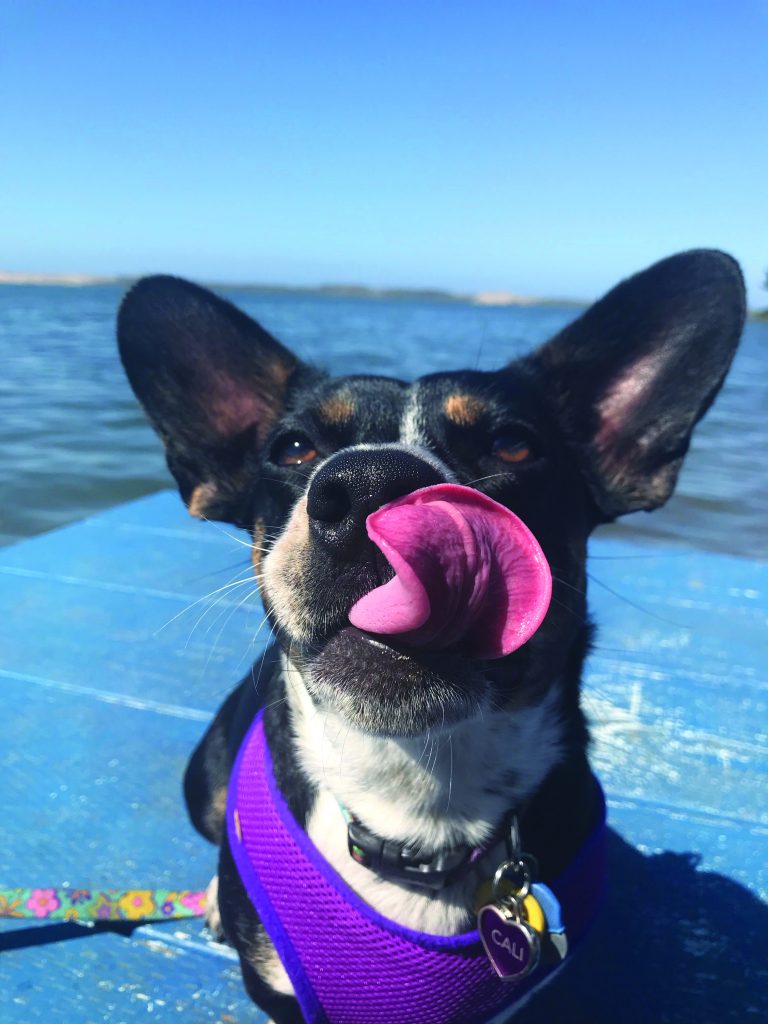
Callie is a Boston terrier mix who is a self-taught expert in Scatology. She established her authority on the subject before her second birthday with the best-seller, To Poo is Canine, to Pick Up Divine. When Callie isn’t investigating droppings from other dogs and local wildlife, she enjoys long walks, playing fetch, holding two toys at once, and silently approving when her people pick up after her when nature calls.
Mutts for Clean Water 2019 Photo Contest: A Dog’s Tale
Hiya, folks! Callie here! I’m excited to talk to you about an opportunity to create awareness about the problem of canine poop. My hoomans are awesome and take me out all the time but, I can’t hold it in the whole time. Trust me, I tried once and it was ruff! (Pun intended) Luckily, they always bring my poop collector bags.
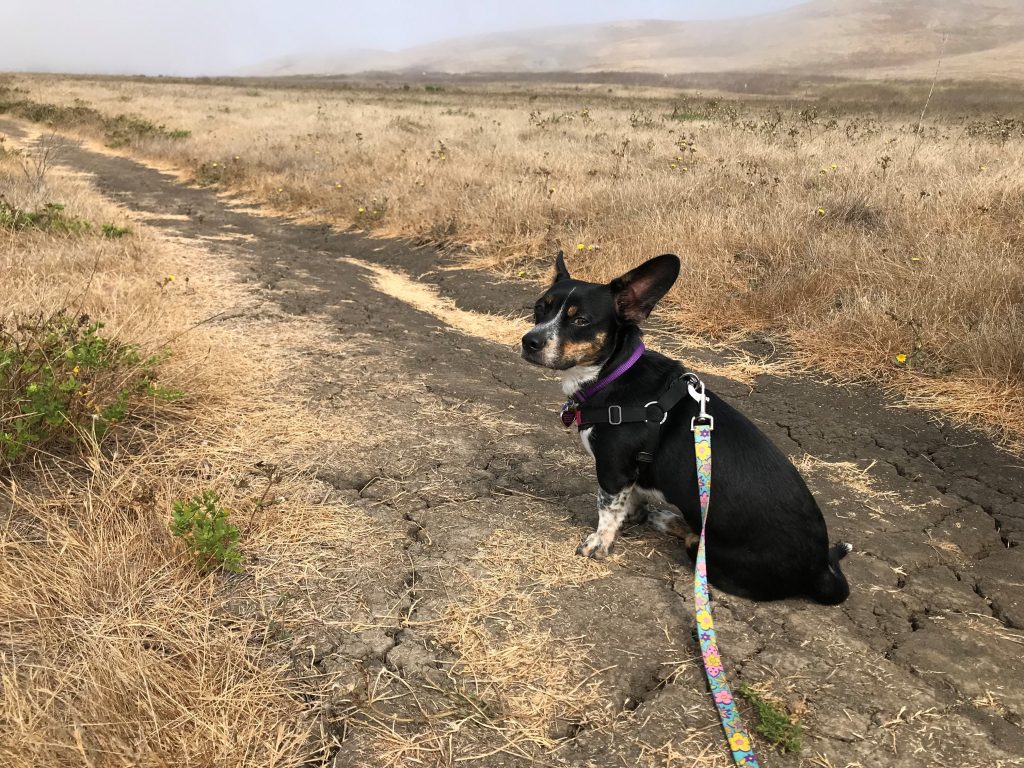
My owners take me on long hikes and bring poop collector bags for when I’ve gotta go!
How does dog poop affect us and our environment?
Did you know dog poop has two times the amount of bacteria that hooman waste has? *gasp* Ewwww. So, what happens if other hoomans don’t pick up my dog buddies’ poop? Well, we are going to have some issues down the road.
On average, each of us dogs creates three and a half pounds of poop every week. And there are a lot of us! In Morro Bay and Los Osos, our pack’s about 5,500 dogs strong. Together, we make about 9.5 tons of poop each week. That’s as heavy as 111 of my friend Dawn, the Great Dane, all together.
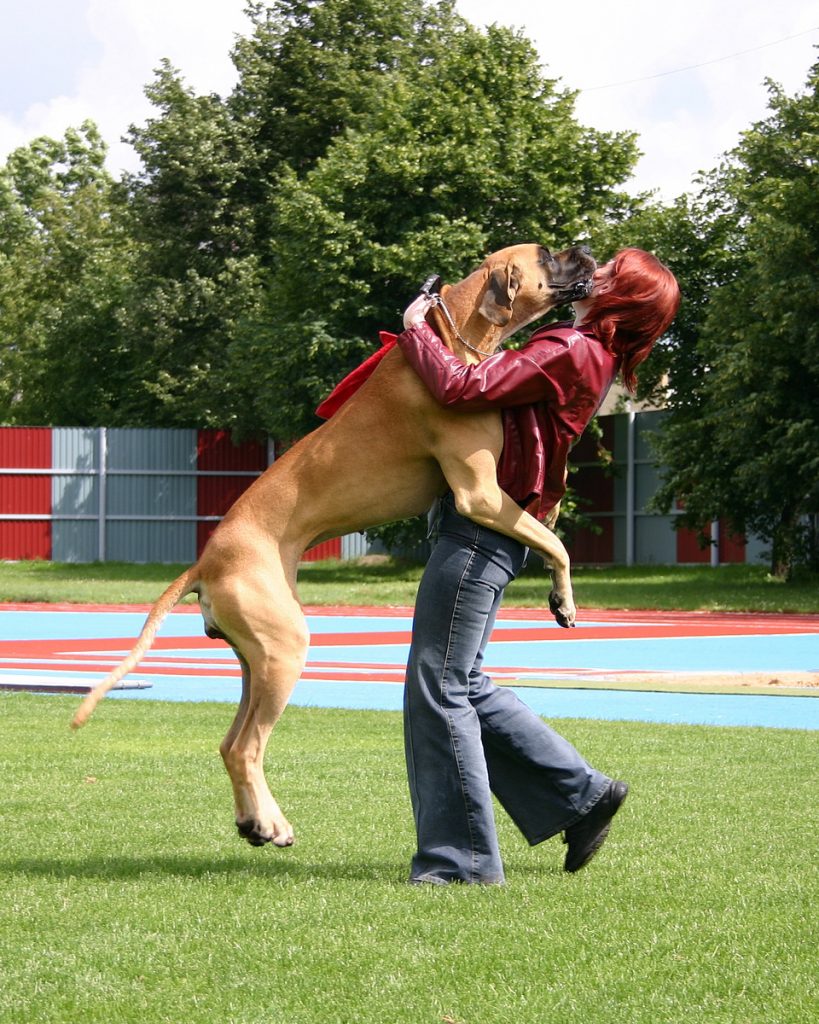
Fawn the Great Dane with her person. Fawn says thanks by giving her people a 171-pound dog hug every time they pick up her poop. That’s love! Photograph courtesy of Rytis Mikelskas via Wikimedia Commons license. Across San Luis Obispo County, there are about 62,000 of us furry canine friends who make more than 217,000 pounds of poop each week. That amount of poop weighs about the same as 1,270 of my friend Fawn (she’s the Great Dane in the picture above), or forty sets of 101 average-sized Dalmatians. Check out my friend, Dot, in the picture below for a size reference.
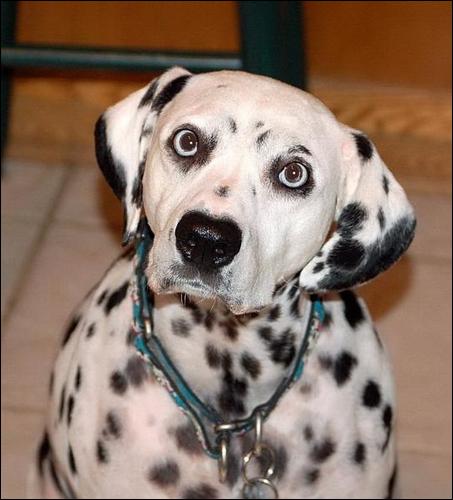
My friend, Dot, was shocked when she heard that dogs across San Luis Obispo County make about 217,000 pounds of poop each week. You know what else? It can take a year for dog poop to completely break down. So, let’s say Dot’s people don’t pick up her poop. (Sorry Dot, I don’t mean to embarass you—this is for science!) The next time it rains—even if that’s six months later—the rain can run over the pile of dry poop and carry all that bacteria into the storm drain and out into our creeks, estuaries, lakes, rivers, and the ocean. All of those germs can make big hoomans and their little hooman puppies sick!
Many creeks and rivers that could be used for fun things, like fetching sticks out of the water, going for a doggie paddle, or spending the day hanging out in a boat with your favorite hooman, are not safe because they’re contaminated with these bacteria. Dog poop also has a lot of nitrogen, which can make algae bloom and grow much more than it normally would. Algae sucks a lot of the oxygen out of the water, which can make it a lot harder for our fishy friends to breathe! A lot of them *sniffle sniffle* don’t make it when there’s not enough oxygen in the water.
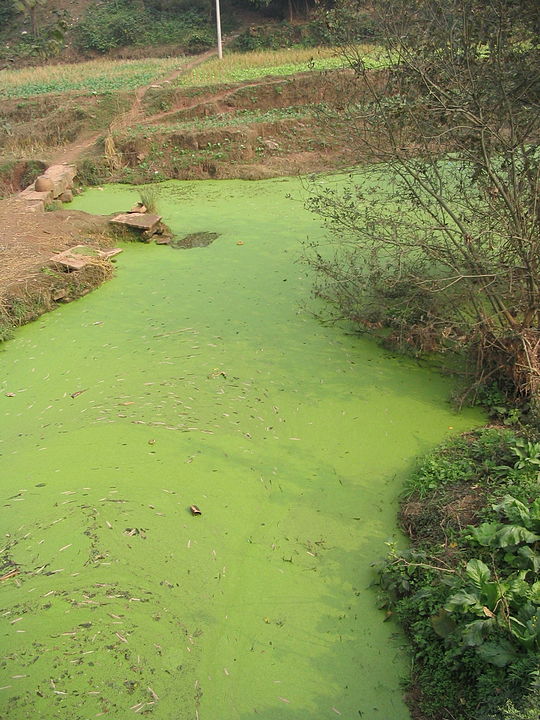
This creek used be lovely, but now there is a lot of Algae! Scoop poop every stinkin’ time to avoid this from happening in our community. Photo courtesy of Felix Andrews via Wikimedia Commons license.
Some hoomans leave dog poop out in their yards as fertilizer, thinking that it will help their grass or their gardens grow. These hoomans don’t know that our dog doo won’t do any good for their gardens or their hooman puppies. It can make those people puppies sick, and it has so much nitrogen that it can burn the plants it lands on. Help spread the word to keep big hoomans, hooman puppies, and our water safe!
The best thing that you hoomans can do to keep everyone healthy and our water clean is to pick up after us dogs. We’ll thank you with all the sloppy kisses you could want. The second best thing you can do is to enter the Mutts for Clean Water photo contest and share a picture of your dog with a bag of their business, all tied up and ready for the trash! Every time you enter the contest, you spread the word about the horrors of abandoned dog poop and get other hoomans excited to pick up after their furry canine friends. (You’ll also get another chance to win every time you post a new picture!)
The contest starts July 1st and ends July 19th. What are you waiting for? The sun is out, and I bet your doggo is having a good fur day! All you need to do is have a quick photo shoot with your dog and follow these rules!
With that, Callie out! I just heard my person saying something about doggy treats *drooling*.
Subscribe to our weekly blog to have posts like this delivered to your inbox each week.
Help us protect and restore the Morro Bay estuary!
-
- Donate to the Estuary Program today and support our work in the field, the lab, and beyond.
The Estuary Program is a 501(c)3 nonprofit. We depend on funding from grants and generous donors to continue our work. - Support us by purchasing estuary-themed gear from ESTERO. This locally owned and operated company donates 20% of proceeds from its Estuary clothing line and 100% of Estuary decal proceeds to the Estuary Program. Thank you, ESTERO!
- Purchase items from the the Estuary Program’s store on Zazzle. Zazzle prints and ships your items, and the Estuary Program receives 10% of the proceeds. Choose from mugs, hats, t-shirts, and even fanny packs (they’re back!) with our fun Estuary Octopus design, our classic Estuary Program logo, or our Mutts for the Bay logo.
- Donate to the Estuary Program today and support our work in the field, the lab, and beyond.
Thank you for helping our beautiful, bountiful, biodiverse bay!
Works cited